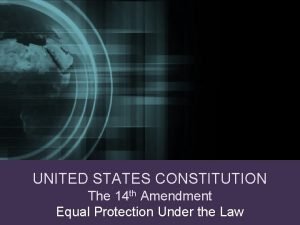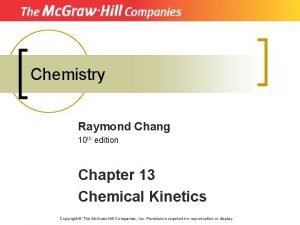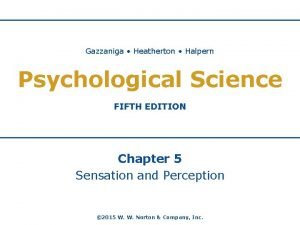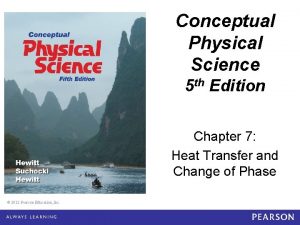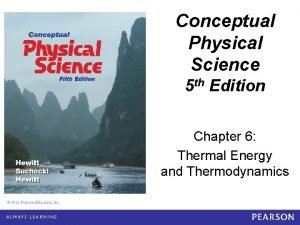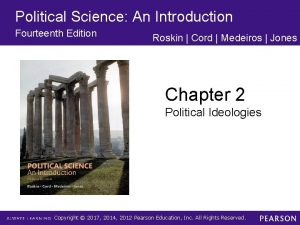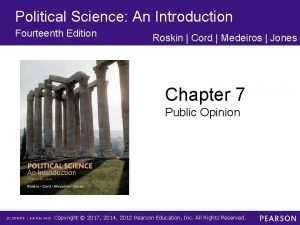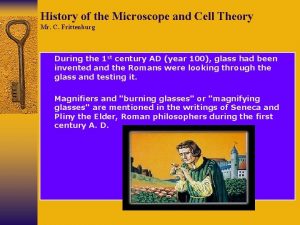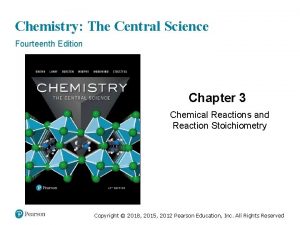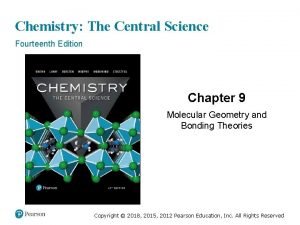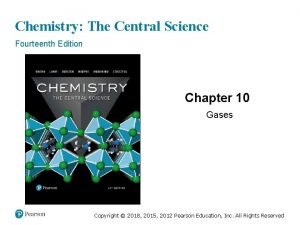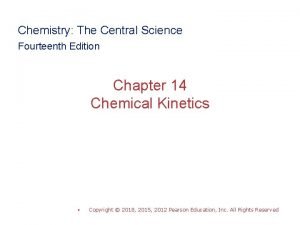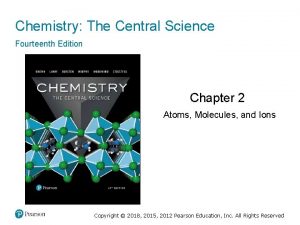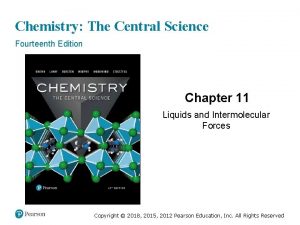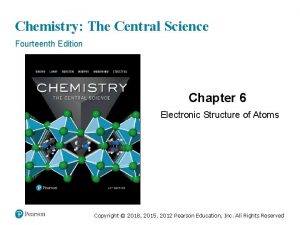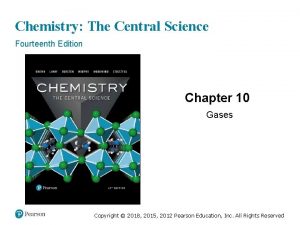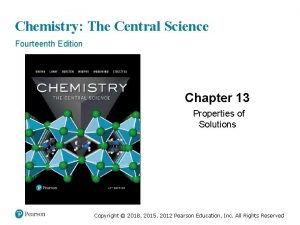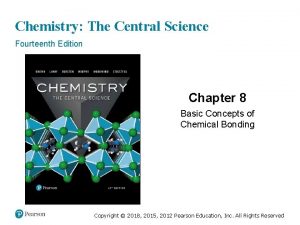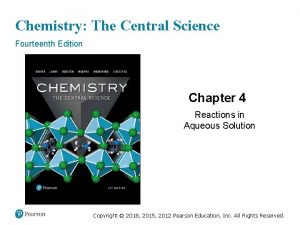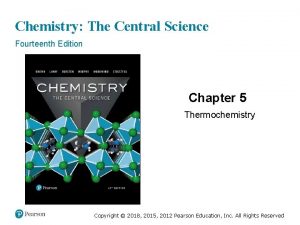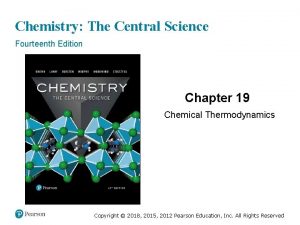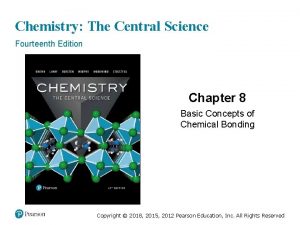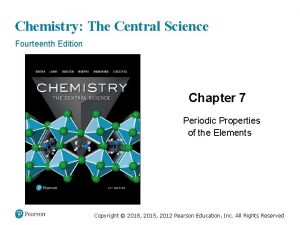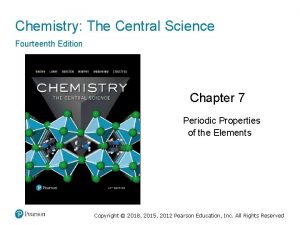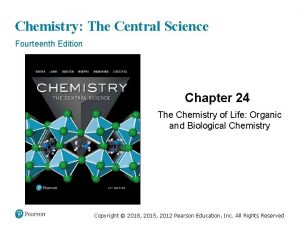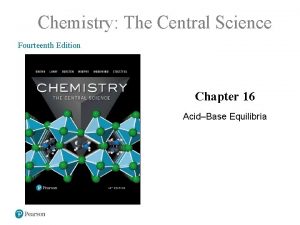Chemistry The Central Science Fourteenth Edition Chapter 21

































































- Slides: 65

Chemistry: The Central Science Fourteenth Edition Chapter 21 Nuclear Chemistry Copyright © 2018, 2015, 2012 Pearson Education, Inc. All Rights Reserved

The Nucleus • Remember that the nucleus is composed of the two nucleons, protons and neutrons. • The number of protons is the atomic number. • The number of protons and neutrons together is the mass number. Copyright © 2018, 2015, 2012 Pearson Education, Inc. All Rights Reserved

Isotopes • Not all atoms of the same element have the same mass, due to different numbers of neutrons in those atoms. • There are, for example, three naturally occurring isotopes of uranium: – Uranium-234 – Uranium-235 – Uranium-238 Copyright © 2018, 2015, 2012 Pearson Education, Inc. All Rights Reserved

Radioactivity • Some nuclei change spontaneously, emitting radiation. They are said to be radioactive. • We refer to these as radionuclides. • There are several ways radionuclides can decay into a different nuclide. • We use nuclear equations to show these nuclear reactions occur. Copyright © 2018, 2015, 2012 Pearson Education, Inc. All Rights Reserved

Nuclear Equations • In chemical equations, atoms and charges need to balance. • In nuclear equations, atomic number and mass number need to balance. This is a way of balancing charge (atomic number) and mass (mass number) on an atomic scale. Copyright © 2018, 2015, 2012 Pearson Education, Inc. All Rights Reserved

Most Common Kinds of Radiation Emitted by a Radionuclide Table 21. 1 Properties of Alpha, Beta, and Gamma Radiation Type of Radiation Property Alpha Beta Gamma Charge 2+ 1− 0 Mass 6. 64 times 10 to the negative twenty-fourth grams 9. 11 times 10 to the negative twentyeighth grams 0 Relative penetrating power 1 100 10, 000 Nature of radiation super 4 sub 2, H e nuclei Electrons High-energy photons Copyright © 2018, 2015, 2012 Pearson Education, Inc. All Rights Reserved

Types of Radioactive Decay (1 of 2) • Alpha decay • Beta decay • Gamma emission • Positron emission • Electron capture Copyright © 2018, 2015, 2012 Pearson Education, Inc. All Rights Reserved

Types of Radioactive Decay (2 of 2) Table 21. 3 Types of Radioactive Decay Change in Atomic Number Change in Mass Number Type Nuclear Equation Alpha emission super Ay sub z, X yields super Ay minus 4 sub Z minus 2, Y plus super 4 sub 2, H e − 2 − 4 Beta emission super Ay sub Z, X yields super Ay sub Z plus 1, y plus super 0 sub negative 1, e +1 Unchanged Positron emission , super Ay sub Z, X yields super Ay sub Z minus 1, Y plus super 0 sub positive 1, e − 1 Unchanged Electron capture* super Ay sub Z, X yields super 0 sub negative 1, e yields super Ay sub Z minus 1, Y − 1 Unchanged *The electron captured comes from the electron cloud surrounding the nucleus. Copyright © 2018, 2015, 2012 Pearson Education, Inc. All Rights Reserved

Alpha Decay Alpha decay is the loss of an α-particle (He-4 nucleus, two protons and two neutrons): • Note how the equation balances: – atomic number: 92 = 90 + 2 – mass number: 238 = 234 + 4 Copyright © 2018, 2015, 2012 Pearson Education, Inc. All Rights Reserved

Beta Decay Beta decay is the loss of a β-particle (a high-speed electron emitted by the nucleus): Balancing: atomic number: 53 = 54 + (– 1) mass number: 131 = 131 + 0 Copyright © 2018, 2015, 2012 Pearson Education, Inc. All Rights Reserved

Gamma Emission Gamma emission is the loss of a γ-ray, which is high-energy radiation that almost always accompanies the loss of a nuclear particle: Copyright © 2018, 2015, 2012 Pearson Education, Inc. All Rights Reserved

Positron Emission Some nuclei decay by emitting a positron, a particle that has the same mass as, but an opposite charge to, that of an electron: Balancing: atomic number: 6 = 5 + 1 mass number: 11 = 11 + 0 Copyright © 2018, 2015, 2012 Pearson Education, Inc. All Rights Reserved

Electron Capture An electron from the surrounding electron cloud is absorbed into the nucleus during electron capture. Balancing: atomic number: 37 + (− 1) = 36 mass number: 81 + 0 = 81 Copyright © 2018, 2015, 2012 Pearson Education, Inc. All Rights Reserved

Sources of Some Nuclear Particles (1 of 2) • Beta particles: • Positrons: • What happens with electron capture? Copyright © 2018, 2015, 2012 Pearson Education, Inc. All Rights Reserved

Sources of Some Nuclear Particles (2 of 2) Table 21. 2 Particles Found in Nuclear Reactions Particle Symbol Neutron super 1 sub 0, n or n Proton super 1 sub 1, H or p Electron super 0 sub negative 1, e Alpha particle super 4 sub 2, H e or alpha Beta particle super 0 sub negative 1, e or beta, minus Positron super 0 sub positive 1, e or beta, plus Copyright © 2018, 2015, 2012 Pearson Education, Inc. All Rights Reserved

Nuclear Stability • Any atom with more than one proton (anything but H) will have repulsions between the protons in the nucleus. • Strong nuclear force helps keep the nucleus together. • Neutrons play a key role stabilizing the nucleus, so the ratio of neutrons to protons is an important factor. Copyright © 2018, 2015, 2012 Pearson Education, Inc. All Rights Reserved

Neutron–Proton Ratios • For smaller nuclei stable nuclei have a neutron -to-proton ratio close to 1: 1. • As nuclei get larger, it takes a larger number of neutrons to stabilize the nucleus. • The shaded region in the figure is called the belt of stability; it shows what nuclides would be stable. Copyright © 2018, 2015, 2012 Pearson Education, Inc. All Rights Reserved

Unstable Nuclei (1 of 2) • Compare a nucleus to the “belt of stability. ” • Nuclei above have too many neutrons; they tend to decay by emitting beta particles. • Nuclei below have too many protons; they tend to become more stable by positron emission or electron capture. Copyright © 2018, 2015, 2012 Pearson Education, Inc. All Rights Reserved

Unstable Nuclei (2 of 2) • Nuclei with large atomic numbers alpha emission. tend to decay by Copyright © 2018, 2015, 2012 Pearson Education, Inc. All Rights Reserved

Radioactive Decay Chain • Some radioactive nuclei cannot stabilize by undergoing only one nuclear transformation. • They undergo a series of decays until they form a stable nuclide (often a nuclide of lead). Copyright © 2018, 2015, 2012 Pearson Education, Inc. All Rights Reserved

Stable Nuclei (1 of 2) • Magic numbers of 2, 8, 20, 28, 50, or 82 protons or 2, 8, 20, 28, 50, 82, or 126 neutrons result in more stable nuclides. • Nuclei with an even number of protons and neutrons tend to be more stable than those with odd numbers. Copyright © 2018, 2015, 2012 Pearson Education, Inc. All Rights Reserved

Stable Nuclei (2 of 2) Table 21. 4 Number of Stable Isotopes with Even and Odd Numbers of Protons and Neutrons Number of Stable Isotopes Proton Number Neutron Number 157 Even 53 Even Odd 50 Odd Even 5 Odd Copyright © 2018, 2015, 2012 Pearson Education, Inc. All Rights Reserved

Nuclear Transmutations (1 of 2) • Nuclear transmutations can be induced by causing a particle to collide with a nucleus. • Particle accelerators (“atom smashers”) are enormous, using strong magnetic and electric fields to make the particles move so fast. • A linear accelerator has tubes of variable lengths and charges to make the particle move faster. Copyright © 2018, 2015, 2012 Pearson Education, Inc. All Rights Reserved

Nuclear Transmutations (2 of 2) • A cyclotron uses D-shaped magnets to keep particles moving in a spiral. • A synchrotron accelerates particles in a path, which is circular. Copyright © 2018, 2015, 2012 Pearson Education, Inc. All Rights Reserved

Particle Accelerators Copyright © 2018, 2015, 2012 Pearson Education, Inc. All Rights Reserved

Other Nuclear Transmutations • Use of neutrons: – Most synthetic isotopes used in medicine are prepared by bombarding neutrons at a particle, which won’t repel the neutral particle. • Transuranium elements: – Elements immediately after uranium were discovered by bombarding isotopes with neutrons. – Larger elements (atomic number higher than 110) were made by colliding large atoms with nuclei of light elements with high energy. Copyright © 2018, 2015, 2012 Pearson Education, Inc. All Rights Reserved

Writing Nuclear Equations for Nuclear Transmutations Nuclear equations that represent nuclear transmutations are written two ways: 1) or 2) Copyright © 2018, 2015, 2012 Pearson Education, Inc. All Rights Reserved

Kinetics of Radioactive Decay • Radioactive decay is a first-order process. • The kinetics of such a process obey this equation: Copyright © 2018, 2015, 2012 Pearson Education, Inc. All Rights Reserved

Half-Life (1 of 2) • The half-life of such a process is • Half-life is the time required for half of a radionuclide sample to decay. Copyright © 2018, 2015, 2012 Pearson Education, Inc. All Rights Reserved

Half-Life (2 of 2) Table 21. 5 The Half-Lives and Type of Decay for Several Radioisotopes Blank Isotope Half-Life (yr) Type of Decay Natural radioisotopes 238 sub 92, U 4. 5 times 10 to the ninth Alpha Blank super 235 sub 92, U 7. 0 times 10 to the eighth Alpha Blank super 232 sub 90, T h 1. 4 times 10 to the tenth Alpha Blank super 40 sub 19, K 1. 3 times 10 to the ninth Beta Blank super 14 sub 6 5700 Beta Synthetic radioisotopes super 239 sub 94, P u 24, 000 Alpha Blank super 137 sub 55, C s 30. 2 Beta Blank super 90 sub 38, S r 28. 8 Beta Blank super 131 sub 53, I 0. 022 Beta Copyright © 2018, 2015, 2012 Pearson Education, Inc. All Rights Reserved

Radiometric Dating • First-order kinetics and halflife information let us date objects using a “nuclear clock. ” • Carbon dating: The half-life of C-14 is 5700 years. It is limited to objects up to about 50, 000 years old; after this time there is too little radioactivity to measure. • Other isotopes can be used (U-238: Pb-206 in rock). Copyright © 2018, 2015, 2012 Pearson Education, Inc. All Rights Reserved

Measuring Radioactivity: Units • Activity is the rate at which a sample decays. • The units used to measure activity are as follows: – Becquerel (Bq): one disintegration per second – Curie (Ci): disintegrations per second, which is the rate of decay of 1 g of radium Copyright © 2018, 2015, 2012 Pearson Education, Inc. All Rights Reserved

Measuring Radioactivity: Some Instruments • Film badges • Geiger counter • Phosphors (scintillation counters) Copyright © 2018, 2015, 2012 Pearson Education, Inc. All Rights Reserved

Film Badges (1 of 2) • Radioactivity was first discovered by Henri Becquerel because it fogged up a photographic plate. • Film has been used to detect radioactivity since more exposure to radioactivity means darker spots on the developed film. • Film badges are used by people who work with radioactivity to measure their own exposure over time. Copyright © 2018, 2015, 2012 Pearson Education, Inc. All Rights Reserved

Film Badges (2 of 2) Copyright © 2018, 2015, 2012 Pearson Education, Inc. All Rights Reserved

Geiger Counter • A Geiger counter measures the amount of activity present in a radioactive sample. • Radioactivity enters a window and creates ions in a gas; the ions result in an electric current that is measured and recorded by the instrument. Copyright © 2018, 2015, 2012 Pearson Education, Inc. All Rights Reserved

Phosphors • Some substances absorb radioactivity and emit light. They are called phosphors. • An instrument commonly used to measure the amount of light emitted by a phosphor is a scintillation counter. It converts the light to an electronic response for measurement. Copyright © 2018, 2015, 2012 Pearson Education, Inc. All Rights Reserved

Radiotracers • Radiotracers are radioisotopes used to study a chemical reaction. • An element can be followed through a reaction to determine its path and better understand the mechanism of a chemical reaction. • Radionuclides react chemically exactly the same as nonradioactive nuclei of the same element. Copyright © 2018, 2015, 2012 Pearson Education, Inc. All Rights Reserved

Medical Application of Radiotracers (1 of 2) • Radiotracers have found wide diagnostic use in medicine. • Radioisotopes are administered to a patient (usually intravenously) and followed. Certain elements collect more in certain tissues, so an organ or tissue type can be studied based on where the radioactivity collects. Copyright © 2018, 2015, 2012 Pearson Education, Inc. All Rights Reserved

Medical Application of Radiotracers (2 of 2) Table 21. 6 Some Radionuclides Used as Radiotracers Nuclide Half-Life Area of the Body Studied Iodine-131 8. 04 days Thyroid Iron-59 44. 5 days Red blood cells Phosphorus-32 14. 3 days Eyes, liver, tumors Technetium-99 a 6. 0 hours Heart, bones, liver, and lungs Thallium-201 73 hours Heart, arteries Sodium-24 14. 8 hours Circulatory system a. The isotope of technetium is actually a special isotope of Tc-99 called Tc-99 m, where the m indicates a so-called metastable isotope. Copyright © 2018, 2015, 2012 Pearson Education, Inc. All Rights Reserved

Positron Emission Tomography (PET Scan) • A compound labeled with a positron emitter is injected into a patient. • Blood flow, oxygen and glucose metabolism, and other biological functions can be studied. • Labeled glucose is used to study the brain, as seen in the figure to the right. Copyright © 2018, 2015, 2012 Pearson Education, Inc. All Rights Reserved

Energy in Nuclear Reactions (1 of 2) • There is a tremendous amount of energy stored in nuclei. • Einstein’s famous equation, to the calculation of this energy. relates directly Copyright © 2018, 2015, 2012 Pearson Education, Inc. All Rights Reserved

Energy in Nuclear Reactions (2 of 2) To show the enormous difference in energy for nuclear reactions, the mass change associated with the α-decay of 1 mol of U-238 to Th-234 is − 0. 0046 g. The change in energy, ΔE, is then (Note: the negative sign means heat is released. ) Copyright © 2018, 2015, 2012 Pearson Education, Inc. All Rights Reserved

Mass Defect (1 of 2) • Where does this energy come from? • The masses of nuclei are always less than those of the individual parts. • This mass difference is called the mass defect. • The energy needed to separate a nucleus into its nucleons is called the nuclear binding energy. Copyright © 2018, 2015, 2012 Pearson Education, Inc. All Rights Reserved

Mass Defect (2 of 2) Table 21. 7 Mass Defects and Binding Energies for Three Nuclei Nucleus Mass of Individual Nucleons Mass of Nucleus (amu) Mass Defect (a Binding mu) Energy (J) Binding Energy per Nucleon (J) super 4 sub 2, He 4. 00150 4. 03188 0. 03038 4. 53 times 10 to the negative twelfth 1. 13 times 10 to the negative twelfth super 56 sub 26, F e 55. 92068 56. 44914 0. 52846 7. 90 times 10 to the negative eleventh 1. 41 times 10 to the negative twelfth 238 sub 92, U 238. 00031 239. 93451 1. 93420 2. 89 times 10 to the negative tenth 1. 21 times 10 to the negative twelfth Copyright © 2018, 2015, 2012 Pearson Education, Inc. All Rights Reserved

Effects of Nuclear Binding Energy on Nuclear Processes • Dividing the binding energy by the number of nucleons gives a value that can be compared. • Heavy nuclei gain stability and give off energy when they split into two smaller nuclei. This is fission. • Lighter nuclei emit great amounts of energy by being combined in fusion. Copyright © 2018, 2015, 2012 Pearson Education, Inc. All Rights Reserved

Energy: Chemical vs. Nuclear • Chemical energy is associated with making and breaking chemical bonds. • Nuclear energy is enormous in comparison. • Nuclear energy is due to changes in the nucleus of atoms changing them into different atoms. • 13% of worldwide energy comes from nuclear energy. Copyright © 2018, 2015, 2012 Pearson Education, Inc. All Rights Reserved

Nuclear Fission (1 of 4) • Commercial nuclear power plants use fission. • Heavy nuclei can split in many ways. The equations below show two ways U-235 can split after bombardment with a neutron. Copyright © 2018, 2015, 2012 Pearson Education, Inc. All Rights Reserved

Nuclear Fission (2 of 4) • Bombardment of the radioactive nuclide with a neutron starts the process. • Neutrons released in the transmutation strike other nuclei, causing their decay and the production of more neutrons. • This process continues in what we call a chain reaction. Copyright © 2018, 2015, 2012 Pearson Education, Inc. All Rights Reserved

Nuclear Fission (3 of 4) Copyright © 2018, 2015, 2012 Pearson Education, Inc. All Rights Reserved

Nuclear Fission (4 of 4) • The minimum mass that must be present for a chain reaction to be sustained is called the critical mass. • If more than critical mass is present (supercritical mass), an explosion will occur. Weapons were created by causing smaller amounts to be forced together to create this mass. Copyright © 2018, 2015, 2012 Pearson Education, Inc. All Rights Reserved

Nuclear Reactors (1 of 2) In nuclear reactors, the heat generated by the reaction is used to produce steam that turns a turbine connected to a generator. Otherwise, the plant is basically the same as any power plant. Copyright © 2018, 2015, 2012 Pearson Education, Inc. All Rights Reserved

Nuclear Reactors (2 of 2) • The reactor core consists of fuel rods, control rods, moderators, and coolant. • The control rods block the paths of some neutrons, keeping the system from reaching a dangerous supercritical mass. Copyright © 2018, 2015, 2012 Pearson Education, Inc. All Rights Reserved

Nuclear Waste • Reactors must be stopped periodically to replace or reprocess the nuclear fuel. • They are stored in pools at the reactor site. • The original intent was that this waste would then be transported to reprocessing or storage sites. • Political opposition to storage site location and safety challenges for reprocessing have led this to be a major social problem. Copyright © 2018, 2015, 2012 Pearson Education, Inc. All Rights Reserved

Nuclear Fusion (1 of 2) • When small atoms are combined, much energy is released. This occurs on the Sun. The reactions are often called thermonuclear reactions. • If it were possible to easily produce energy by this method, it would be a preferred source of energy. • However, extremely high temperatures and pressures are needed to cause nuclei to fuse. Copyright © 2018, 2015, 2012 Pearson Education, Inc. All Rights Reserved

Nuclear Fusion (2 of 2) • This was achieved using an atomic bomb to initiate fusion in a hydrogen bomb. Obviously, this is not an acceptable approach to producing energy. Copyright © 2018, 2015, 2012 Pearson Education, Inc. All Rights Reserved

Radiation in the Environment • We are constantly exposed to radiation. • Ionizing radiation is more harmful to living systems than nonionizing radiation, such as radiofrequency electromagnetic radiation. • Since most living tissue is ~70% water, ionizing radiation is that which causes water to ionize. • This creates unstable, very reactive OH radicals, which result in much cell damage. Copyright © 2018, 2015, 2012 Pearson Education, Inc. All Rights Reserved

Damage to Cells • The damage to cells depends on the type of radioactivity, the length of exposure, and whether the source is inside or outside the body. • Outside the body, gamma rays are most dangerous. • Inside the body, alpha radiation cause most harm. Copyright © 2018, 2015, 2012 Pearson Education, Inc. All Rights Reserved

Exposure (1 of 2) • We are constantly exposed to radiation. What amount is safe? • Setting standards for safety is difficult. • Low-level, long-term exposure can cause health issues. • Damage to the growth-regulation mechanism of cells results in cancer. Copyright © 2018, 2015, 2012 Pearson Education, Inc. All Rights Reserved

Exposure (2 of 2) Table 21. 8 Average Abundances and Activities of Natural Radionuclides† Blank Potassium-40 Rubidium-87 Thorium-232 Utanium-238 28, 000 112 10. 7 2. 8 Land activity (Bq/kg) 870 102 43 35 Ocean elemental concentration (mg/L) 339 0. 12 1 times 10 to the negative seventh 0. 0032 12 0. 11 4 times 10 to the negative seventh 0. 040 Land elemental abundance (ppm) Ocean activity (Bq/L) Ocean sediments elemental abundance (ppm) Ocean sediments activity (Bq/kg) Human body activity (Bq) 17, 000 — 5. 0 1. 0 500 — 20 12 4000 600 0. 08 0. 4‡ †Data from "Ionizing Radiation Exposure of the Population of the United States, " Report 93, 1987, and Report 160, 2009, National Council on Radiation Protection. ‡Includes Iead-210 and polonium-210. daughter nuclei of uranium-238. Copyright © 2018, 2015, 2012 Pearson Education, Inc. All Rights Reserved

Radiation Dose (1 of 2) • Two units are commonly used to measure exposure to radiation: – Gray (Gy): absorption of 1 J of energy per kg of tissue – Rad (for radiation absorbed dose): absorption of 0. 01 J of energy per kg of tissue (100 rad = 1 Gy) • Not all forms of radiation harm tissue equally. A relative biological effectiveness (RBE) is used to show much biological effect there is. Copyright © 2018, 2015, 2012 Pearson Education, Inc. All Rights Reserved

Radiation Dose (2 of 2) • The effective dose is called the rem (SI unit Sievert; 1 Sv = 100 rem). • # of rem = (# of rad) (RBE) Copyright © 2018, 2015, 2012 Pearson Education, Inc. All Rights Reserved

Short-Term Exposure (1 of 2) • 600 rem is fatal to most humans. • Average exposure per year is about 360 mrem. Table 21. 9 Effects of Short-Term Exposures to Radiation Dost (rem) Effect 0 -25 No detectable clinical effects 25 -50 Slight, temporary decrease In white blood cell counts 100 -200 Nausea; marked decrease in white blood cell counts 500 Death-of half the exposed population within 30 days Copyright © 2018, 2015, 2012 Pearson Education, Inc. All Rights Reserved

Short-Term Exposure (2 of 2) Copyright © 2018, 2015, 2012 Pearson Education, Inc. All Rights Reserved

Copyright © 2018, 2015, 2012 Pearson Education, Inc. All Rights Reserved
 Management fourteenth edition
Management fourteenth edition Chapter 1 chapter assessment the central science
Chapter 1 chapter assessment the central science Fourteenth amendment
Fourteenth amendment Summer personification poems
Summer personification poems Thermodynamic vs kinetic control
Thermodynamic vs kinetic control Organic chemistry third edition david klein
Organic chemistry third edition david klein Organic chemistry (3rd) edition chapter 2 problem 17s
Organic chemistry (3rd) edition chapter 2 problem 17s What is her favourite subject?
What is her favourite subject? Using mis 10th edition
Using mis 10th edition Chapter 1
Chapter 1 Transition state energy diagram
Transition state energy diagram Klein organic chemistry 2nd edition
Klein organic chemistry 2nd edition Introductory chemistry 4th edition
Introductory chemistry 4th edition Introductory chemistry 5th edition nivaldo j. tro
Introductory chemistry 5th edition nivaldo j. tro Introductory chemistry 5th edition nivaldo j. tro
Introductory chemistry 5th edition nivaldo j. tro David klein organic chemistry
David klein organic chemistry Zumdahl chemistry, 9th edition notes
Zumdahl chemistry, 9th edition notes Organic chemistry third edition david klein
Organic chemistry third edition david klein General chemistry
General chemistry Drop in molecular views answer key
Drop in molecular views answer key Chemistry by raymond chang 10th edition
Chemistry by raymond chang 10th edition Fifth edition chemistry a molecular approach
Fifth edition chemistry a molecular approach Organic chemistry
Organic chemistry Organic chemistry second edition david klein
Organic chemistry second edition david klein Ib chemistry organic chemistry
Ib chemistry organic chemistry Inorganic vs organic chemistry
Inorganic vs organic chemistry Biological science 6th edition
Biological science 6th edition Psychological science 5th edition
Psychological science 5th edition Conceptual physical science 5th edition
Conceptual physical science 5th edition Conceptual physical science 5th edition
Conceptual physical science 5th edition Conceptual physical science 5th edition
Conceptual physical science 5th edition The fundamentals of political science research 2nd edition
The fundamentals of political science research 2nd edition Political science 14th edition
Political science 14th edition Political science 14th edition
Political science 14th edition Science power 9 atlantic edition
Science power 9 atlantic edition Hát kết hợp bộ gõ cơ thể
Hát kết hợp bộ gõ cơ thể Slidetodoc
Slidetodoc Bổ thể
Bổ thể Tỉ lệ cơ thể trẻ em
Tỉ lệ cơ thể trẻ em Gấu đi như thế nào
Gấu đi như thế nào Tư thế worms-breton
Tư thế worms-breton Hát lên người ơi alleluia
Hát lên người ơi alleluia Môn thể thao bắt đầu bằng từ chạy
Môn thể thao bắt đầu bằng từ chạy Thế nào là hệ số cao nhất
Thế nào là hệ số cao nhất Các châu lục và đại dương trên thế giới
Các châu lục và đại dương trên thế giới Công thức tiính động năng
Công thức tiính động năng Trời xanh đây là của chúng ta thể thơ
Trời xanh đây là của chúng ta thể thơ Mật thư anh em như thể tay chân
Mật thư anh em như thể tay chân 101012 bằng
101012 bằng độ dài liên kết
độ dài liên kết Các châu lục và đại dương trên thế giới
Các châu lục và đại dương trên thế giới Thơ thất ngôn tứ tuyệt đường luật
Thơ thất ngôn tứ tuyệt đường luật Quá trình desamine hóa có thể tạo ra
Quá trình desamine hóa có thể tạo ra Một số thể thơ truyền thống
Một số thể thơ truyền thống Cái miệng xinh xinh thế chỉ nói điều hay thôi
Cái miệng xinh xinh thế chỉ nói điều hay thôi Vẽ hình chiếu vuông góc của vật thể sau
Vẽ hình chiếu vuông góc của vật thể sau Thế nào là sự mỏi cơ
Thế nào là sự mỏi cơ đặc điểm cơ thể của người tối cổ
đặc điểm cơ thể của người tối cổ Ví dụ về giọng cùng tên
Ví dụ về giọng cùng tên Vẽ hình chiếu đứng bằng cạnh của vật thể
Vẽ hình chiếu đứng bằng cạnh của vật thể Vẽ hình chiếu vuông góc của vật thể sau
Vẽ hình chiếu vuông góc của vật thể sau Thẻ vin
Thẻ vin đại từ thay thế
đại từ thay thế điện thế nghỉ
điện thế nghỉ Tư thế ngồi viết
Tư thế ngồi viết Diễn thế sinh thái là
Diễn thế sinh thái là


